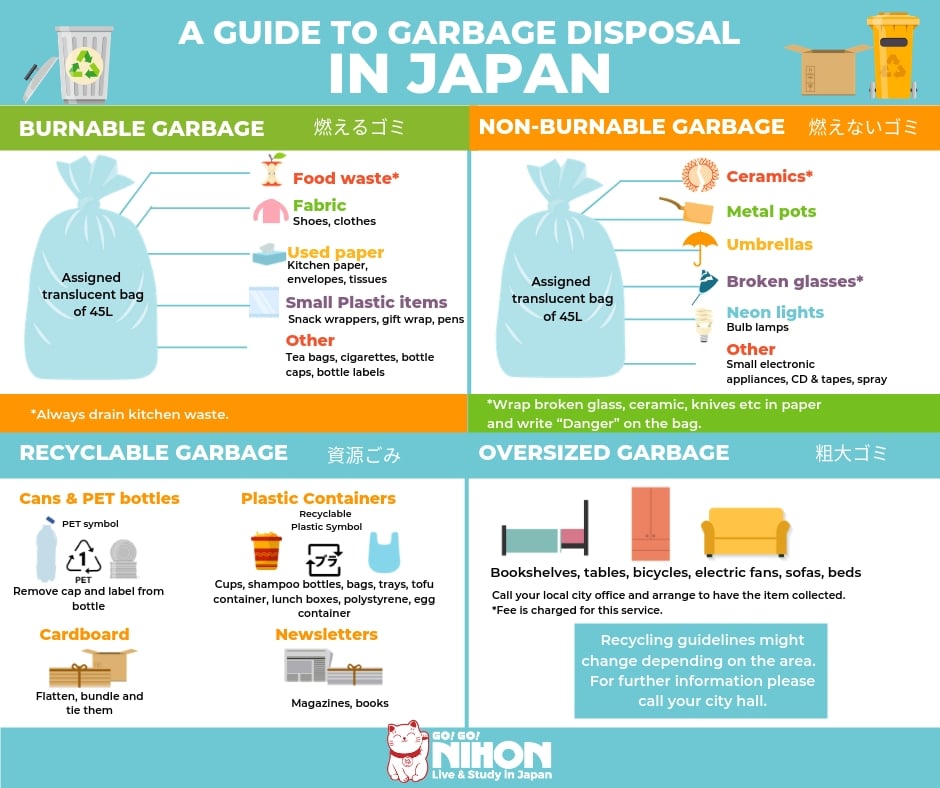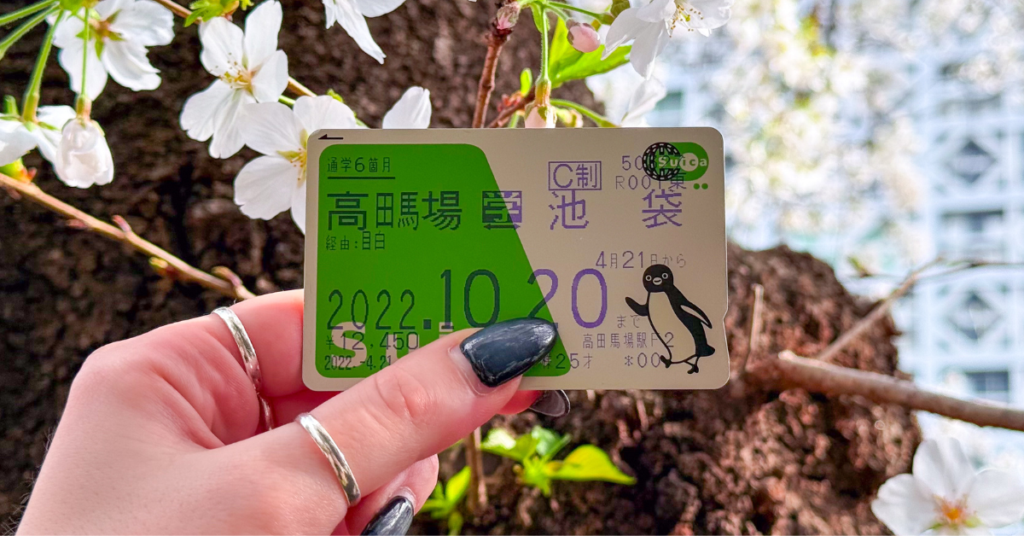Recycling in Japan can have some pretty tricky rules and these rules change from town to town. It takes a little bit of time to get the hang of, but that just means cleaner rubbish and cleaner recycling for the environment. Your waste separation rules may differ from that of your friends or classmates, so it’s always better to double check with your local ward office. But here are some general guidelines to how to separate your waste in Japan.
Dividing recyclables
When it comes to recycling in Japan, every town has its own rules. Some are more lax, some are very, very strict (to the point that one must write his/her own name on their rubbish bag, and if it isn’t sorted correctly, then back it appears on one’s doorstep for one to fix and have re-sent out…not that I know this from experience or anything like that…).
The following information has to do with how my town handled its rubbish when I lived in Tanegashima. Living in a place like Tokyo may have different rules, but they will generally be along the same lines. Upon moving in, it’s always a good idea to head to the nearest city/ward/town hall–which you would have to do no matter what in order to register living there–and get all the information that comes with living there. Bunched up in that info packet will be specific information on how to recycle.
- First there’s paper. Generally, this paper divides into newspaper, cardboard, and other papers. Stack and tie each of these three categories into neat bundles. Newspaper is pretty self explanatory, but make sure to break down and flatten cardboard. Instructions on the sides of cartons of juice, milk, etc., show how to break them down (make sure to recycle the plastic cap separately!).
- Other papers include magazines and colored flyers. Tie these up in their own separate bunch.
- Bottles separate into colors: clear, brown and others. These each go into their own container or clear bag.
- Separate steel and aluminum cans.
- PET (clear plastic drink) bottles get a bag.
- Remove the labels and recycle the caps separately.
- Styrofoam, batteries, and lights, all get their own containers.
- Sharp objects such as knives and other tools should be wrapped carefully and labeled.
- Place others in a non-burnable rubbish bag that can be bought from the local convenience store.
- Last comes the burnable rubbish bag.
Again, not all places are like this. Recycling in Japan isn’t an all-encompassing set of rules. Cities can be a lot more lax, but check upon moving in.
Disposing of rubbish
When recycling in Japan, every neighborhood has designated recycle sites. Japan keeps its areas clean, and designates sites for each neighborhood to bring its trash. Your town hall will tell you where to bring your rubbish, and it’s never very hard to find where it is. Keep a lookout and you’ll notice that on certain days, a mountain of bagged up rubbish sits under colored nets or cages that guard against unwanted animals like crows, or deer (yup, that’s definitely a problem in some places). Certain days can also mean certain kinds of rubbish. For example, the Tuesday of every week can be the day to bring out aluminum cans, and the Thursday for PET bottles.
Oversized items, like old shelves or tables, etc., are fairly easy! Head on over to the local konbini, buy a “scrap” (廃棄, haiki) label, and slap that onto the item to be left by the designated recycle site. When the time comes, the city will come by with a truck to deal with it for you. Again, your mileage may vary. In bigger cities, sometimes residents must pay for specific trucks to come pick up large items or electronics.
Last notes
Before recycling anything, wash it down before putting it into its appropriate bag. It may be a little trouble, but it’s cleaner, won’t smell, and gives those doing the recycling a much easier time.
Remember to take caps off, remove labels off of PET bottles, and separate the steel from the aluminum cans. It can get hectic and feel like a bit of a pain sometimes, but it’s a civic duty that must be done for the future of this planet and its generations to come. I apologize if it sounds a bit corny, but every little bit helps. Now that you’ve got the lowdown, you can do it!

Join the recycling in Japan bandwagon (whether you like it or not, really!) and do your part! Find out other useful information in our blog section on Life in Japan, and if you want to study in Japan, be sure to contact Go! Go! Nihon!














